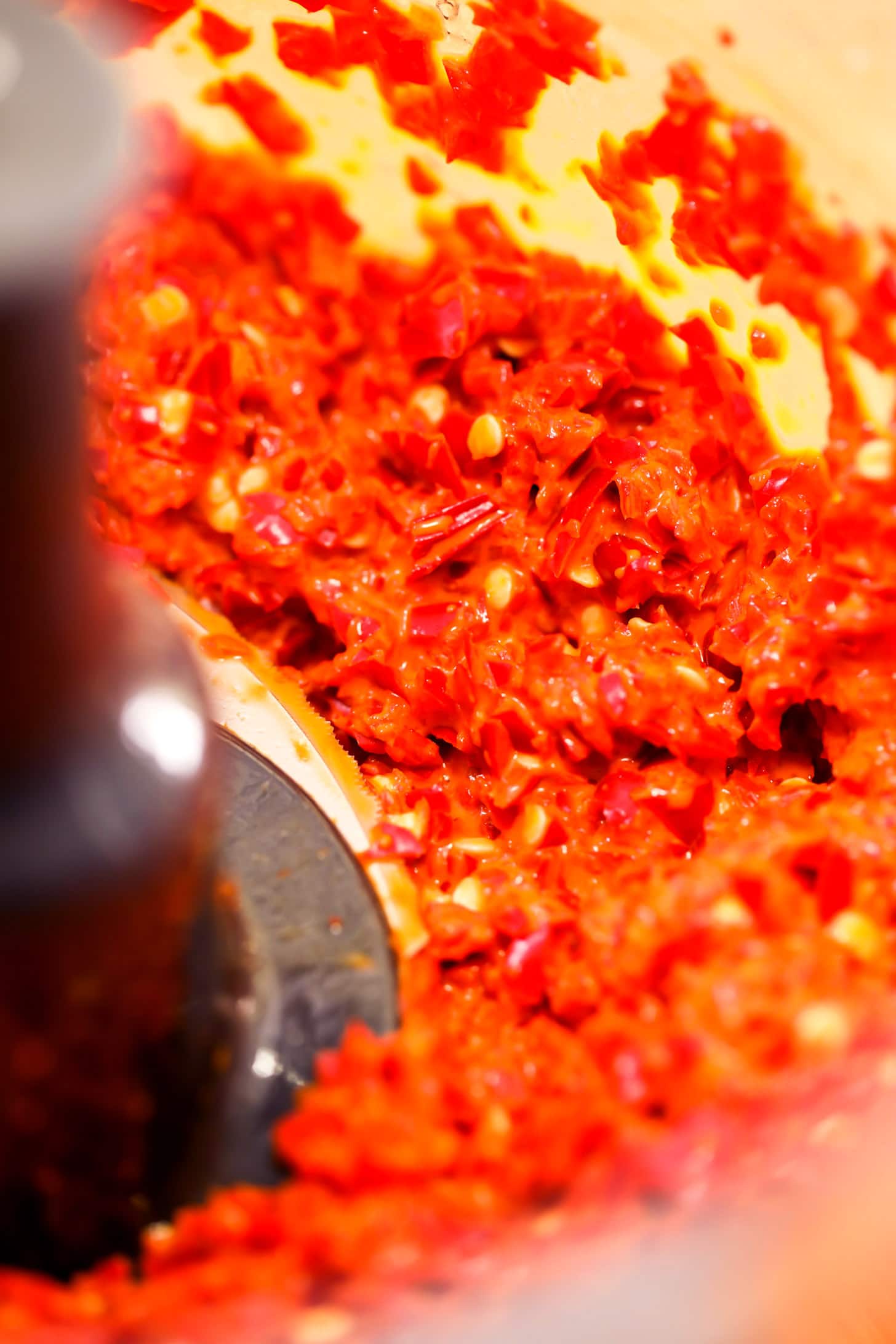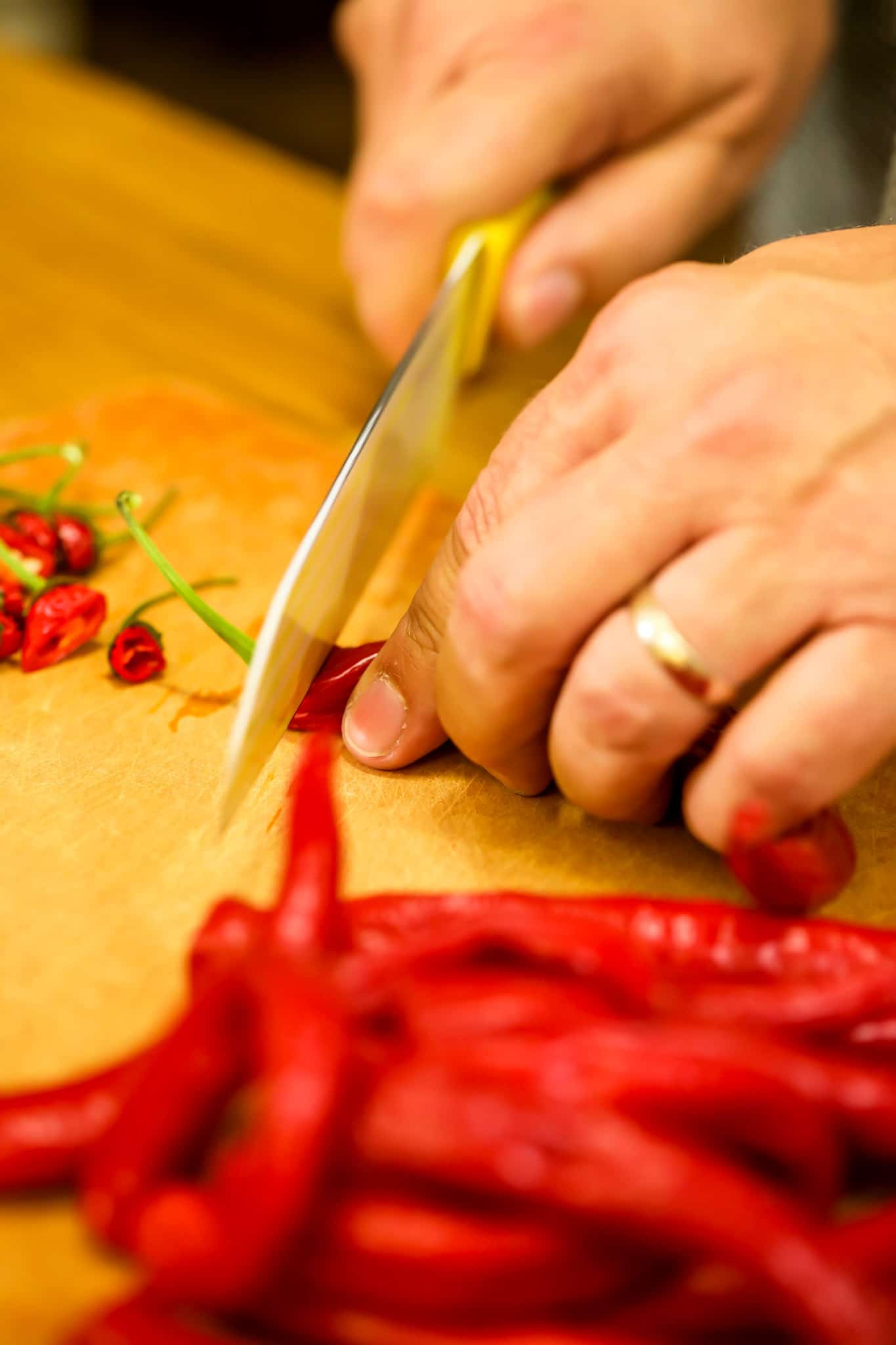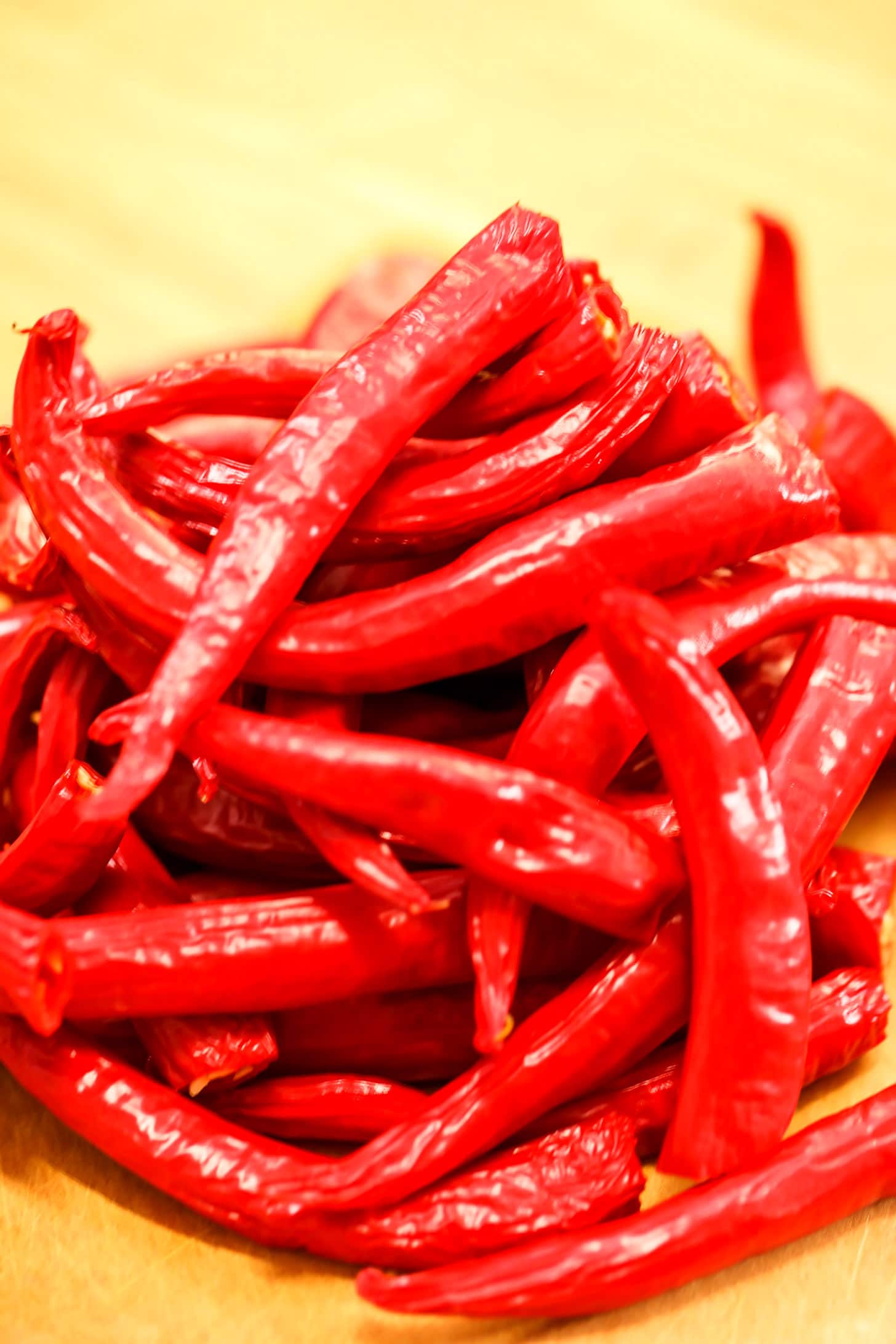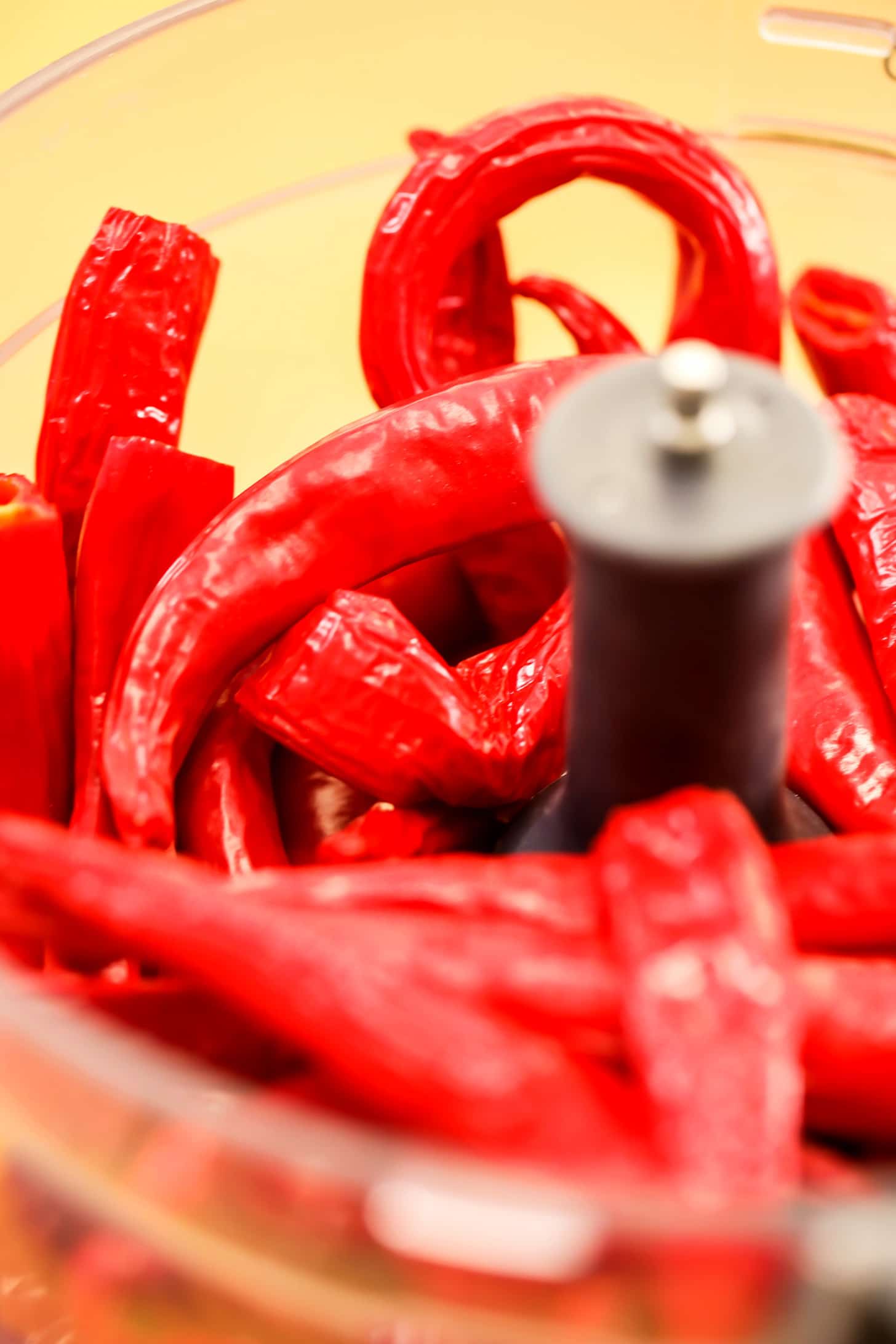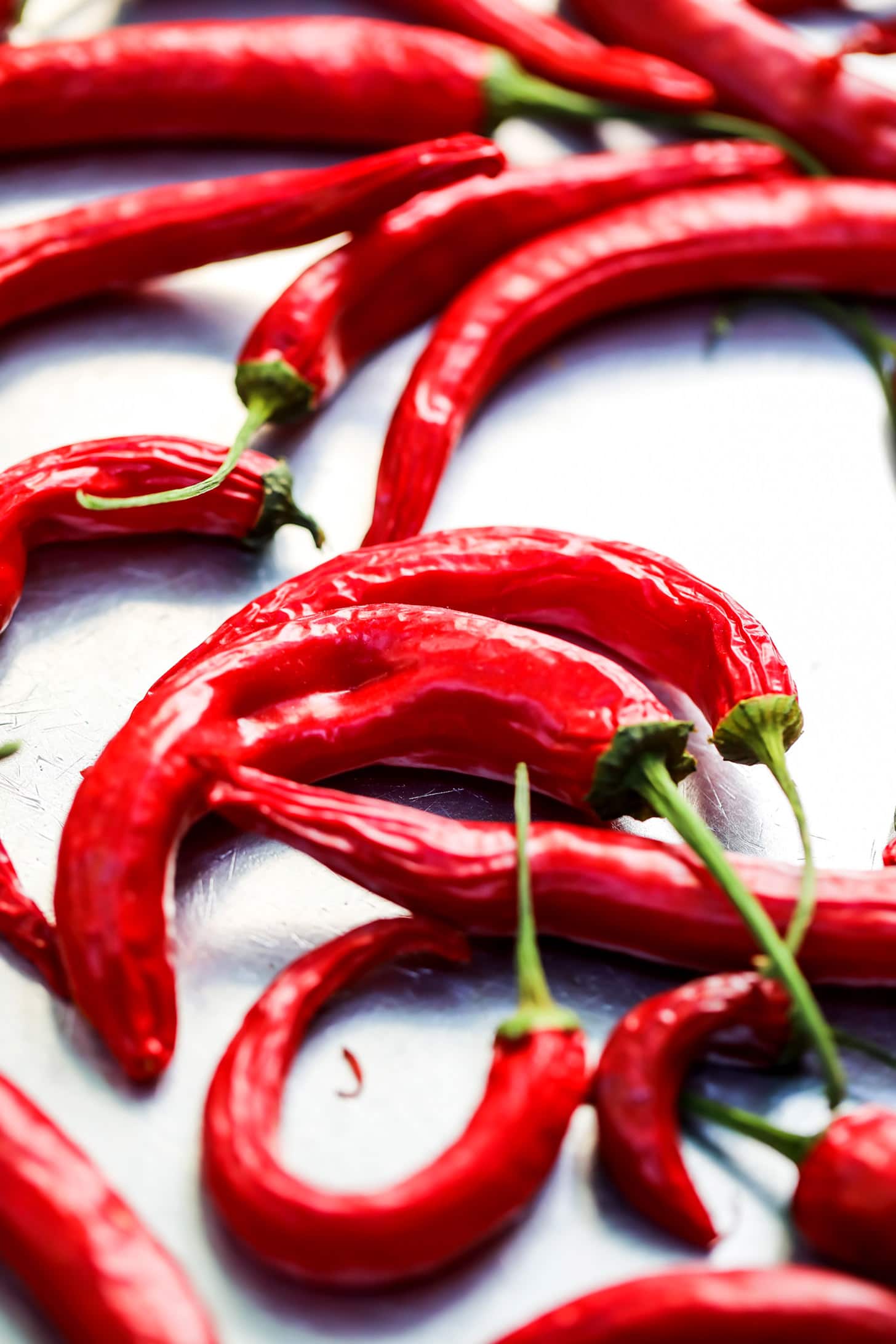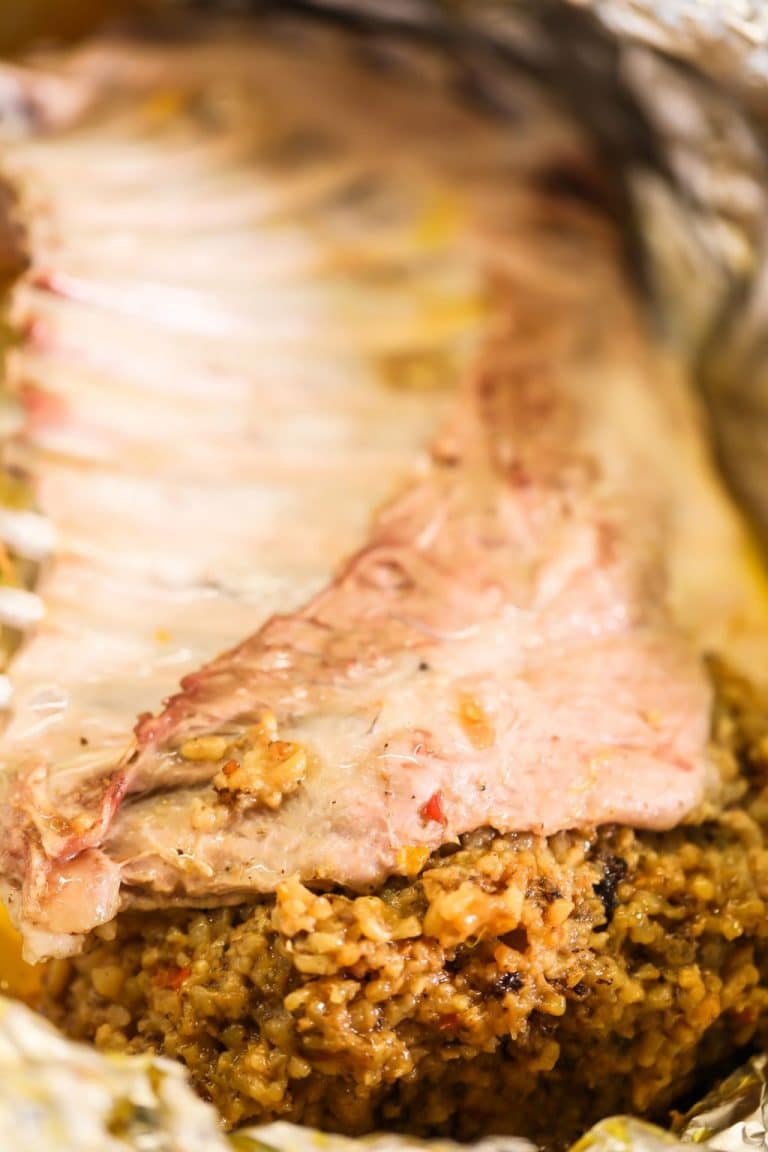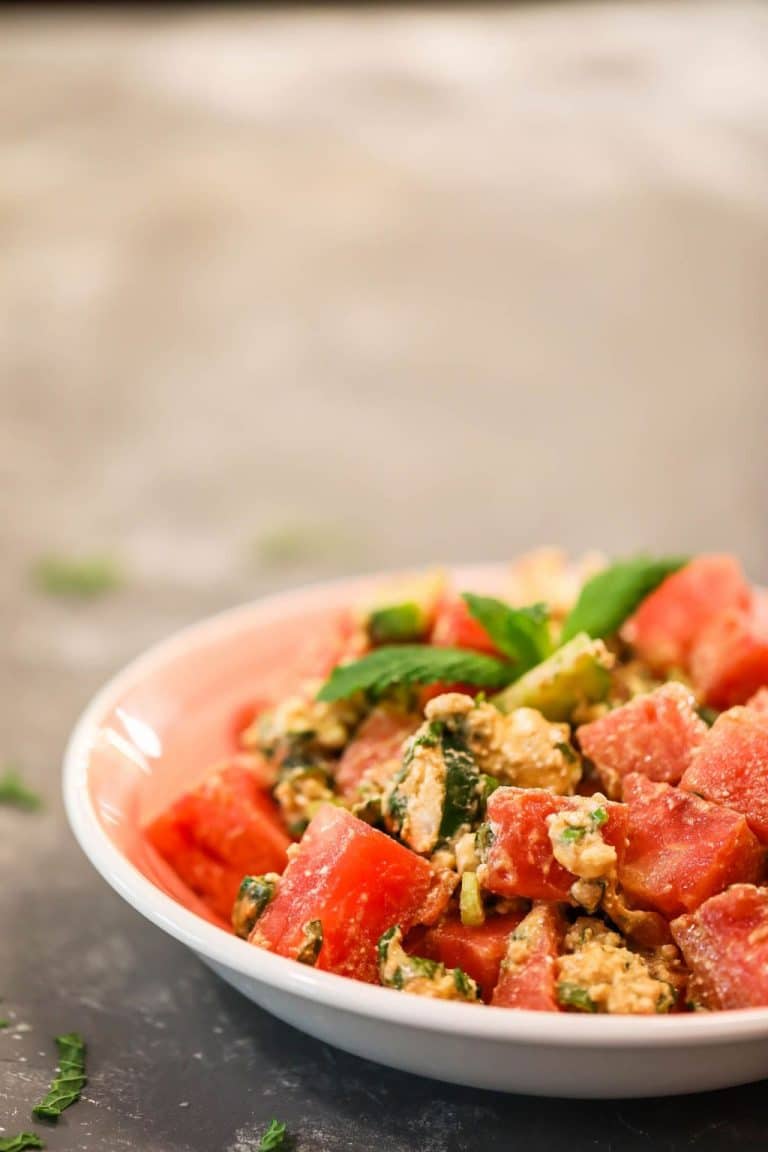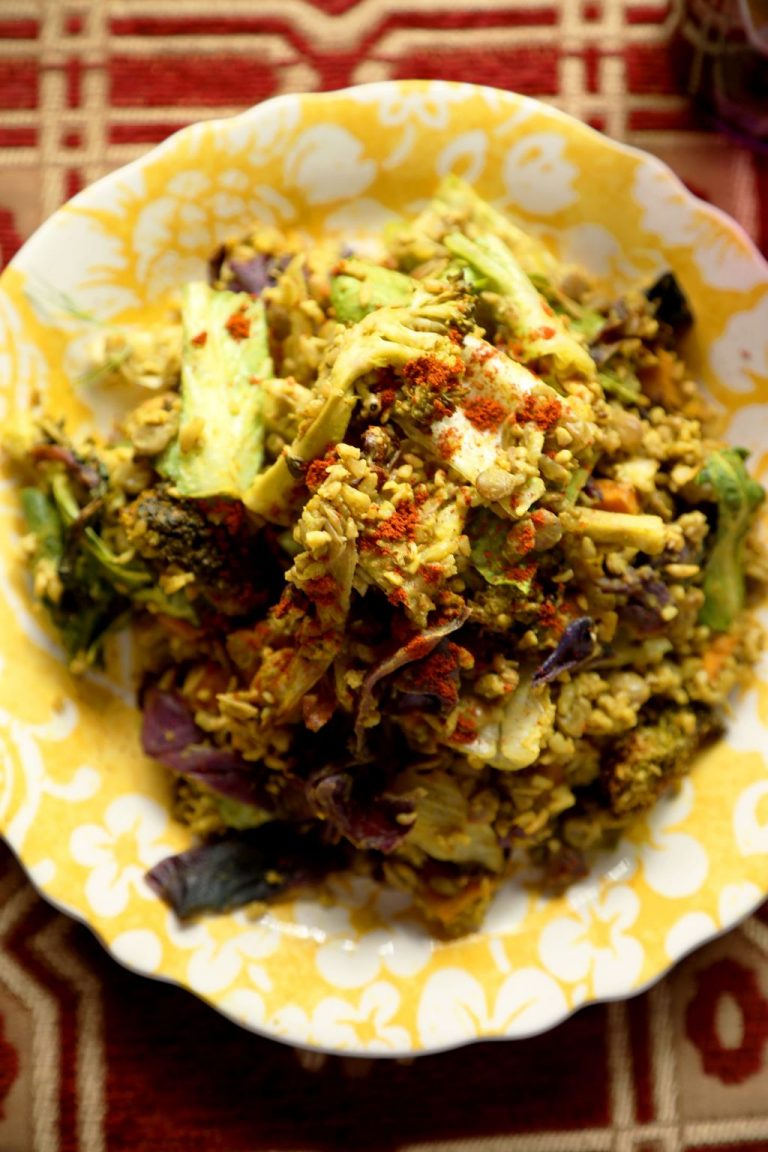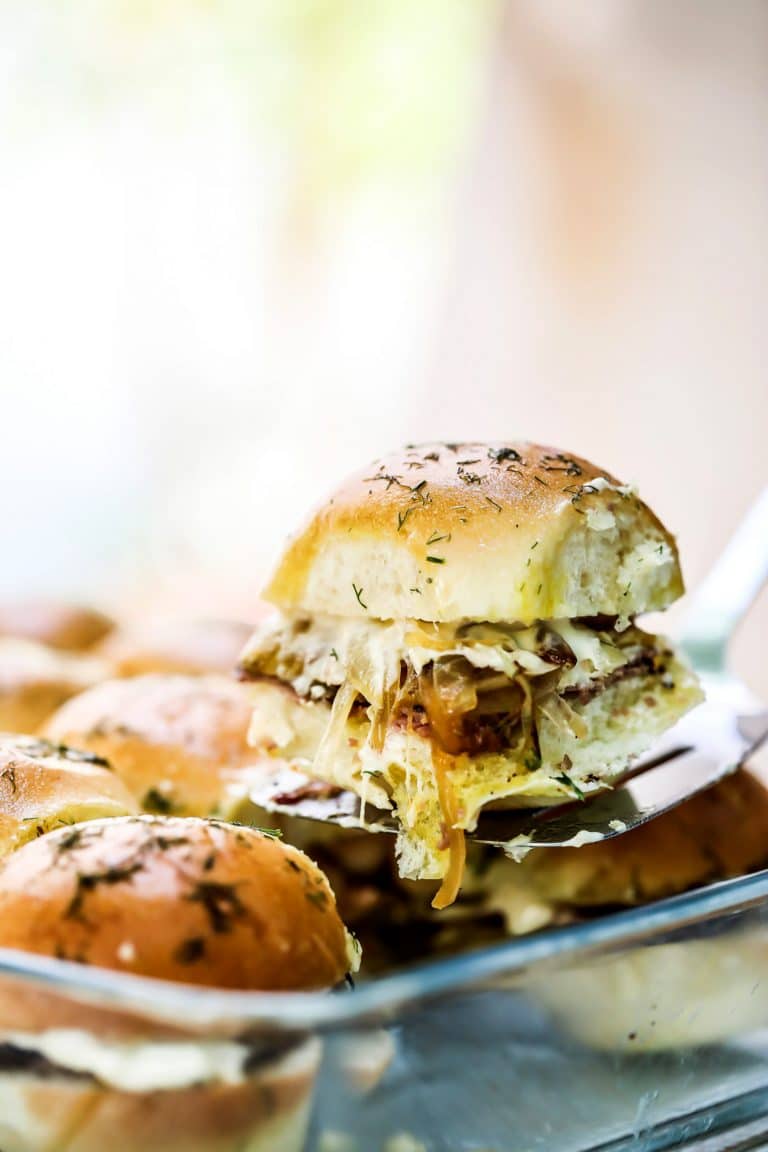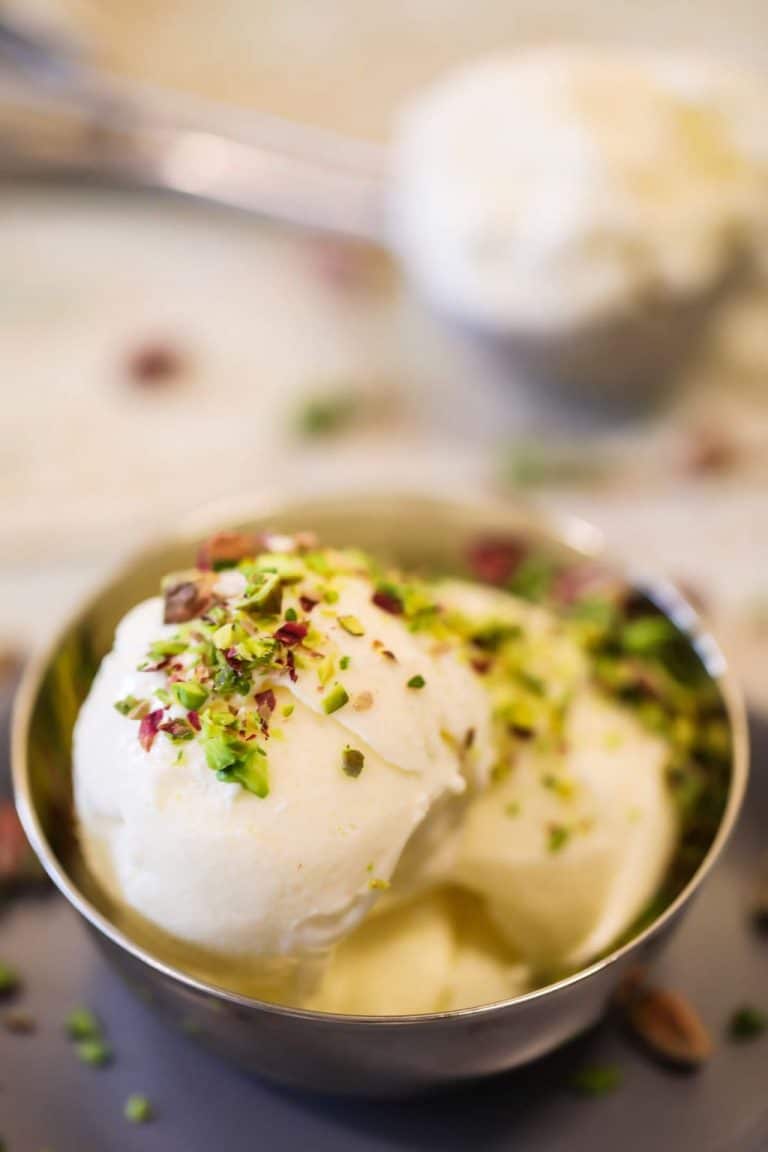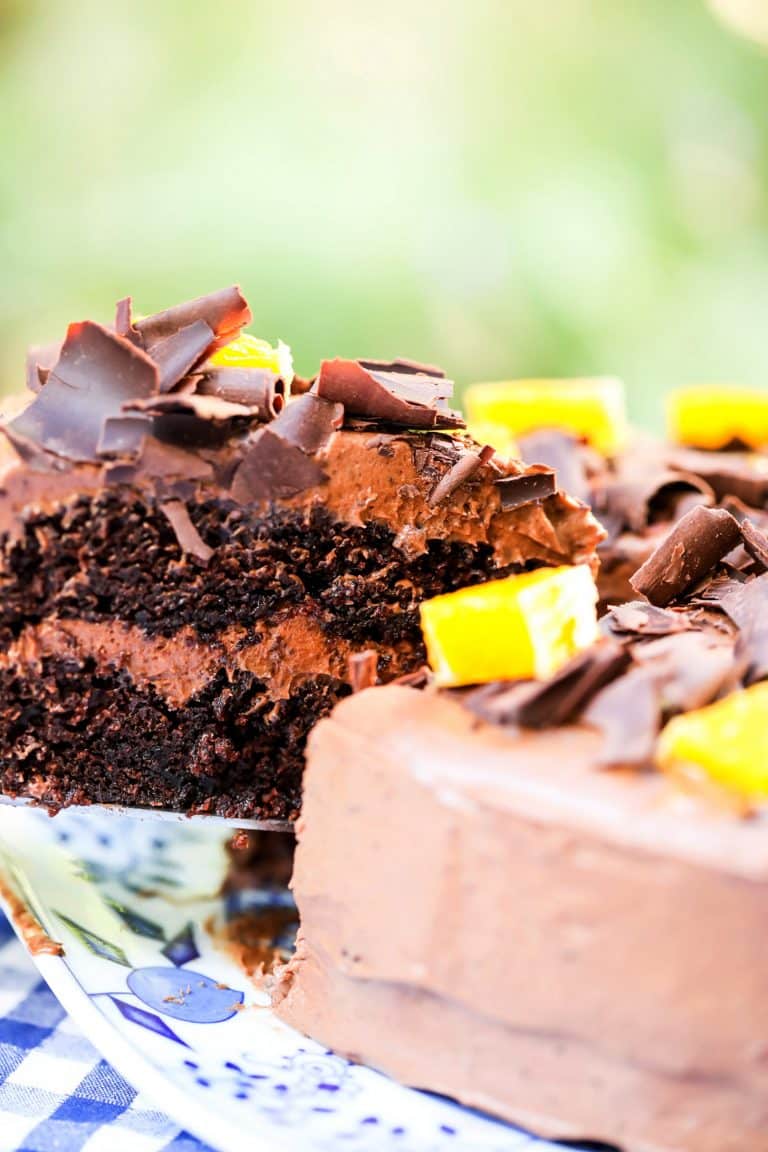Harissa Paste (Hot Sauce of the Gods)
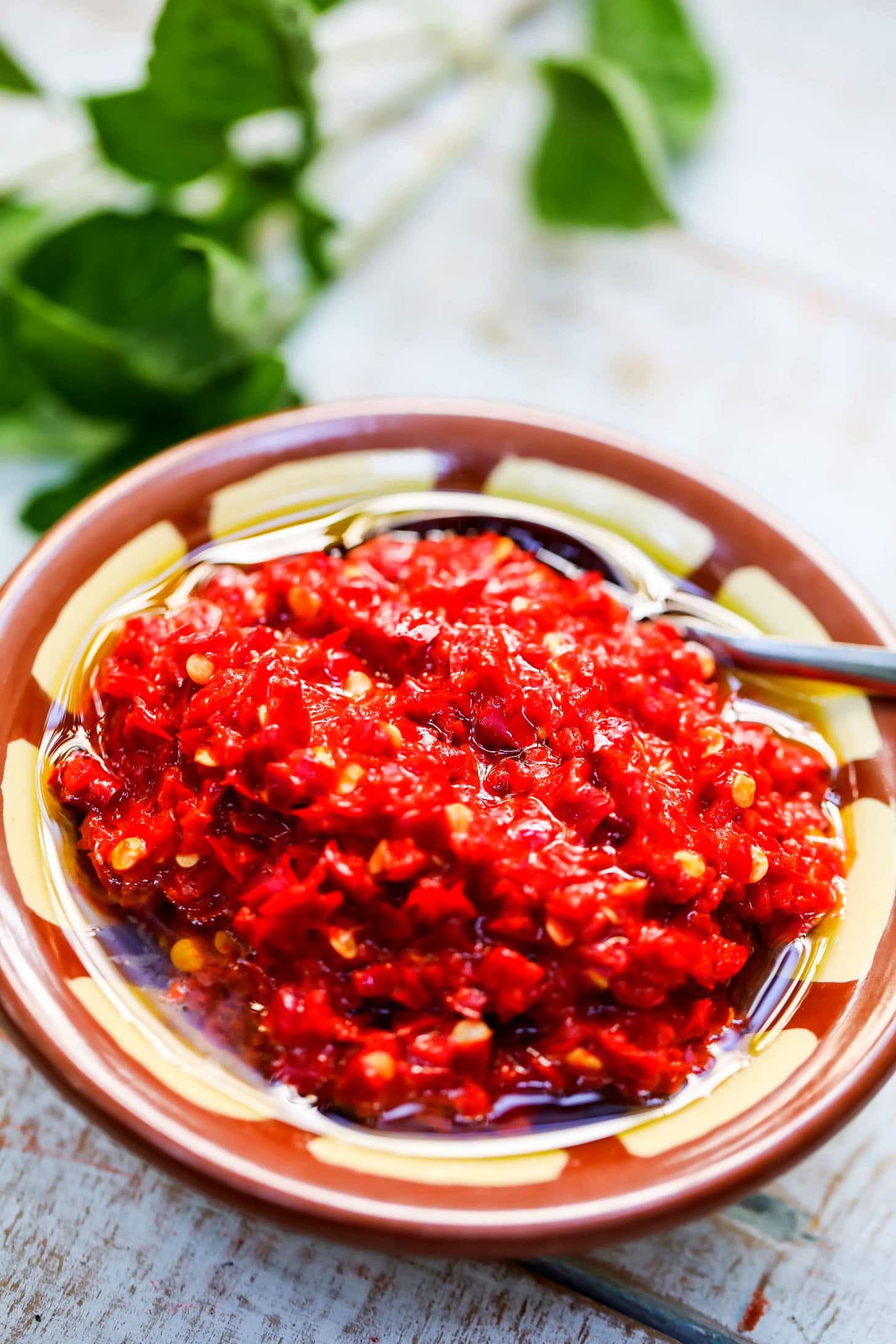
It doesn’t get much purer or simpler than a recipe of harissa paste to delight your taste buds.
A North African version of hot sauce that is very popular throughout the Middle East.
Like so many ancient recipes you will find variations from neighborhood to neighborhood, and country to country.
Middle Eastern food is not inherently ‘hot’ spicy, so people rely on things like harissa or shata to add a kick.
What is Harissa Paste?
In its most basic form it is made from slightly dried peppers, with olive oil and salt.
These ingredients are mashed or blended together to produce a lovely spicy paste to help add heat to your dish.
Chili peppers were first grown in Central and South America, used extensively by the Incas and Aztecs.
They traveled to Europe with the Spanish starting with Christopher Columbus, and then on to the colonies.
With Morocco in North Africa so close to Spain it was not long before these beautiful, fiery chilis made it there.
Traditionally harissa is made with a mortar and pestle and made while you wait in places like Morocco.
However, this very popular hot sauce has several variations depending on where you find it.
I find it much easier and more uniform to make this harissa paste recipe in my food processor.
How to Make Harissa Paste
Spread a pound of fresh red chili peppers out on a large tray and set aside in a warm place.
Allow the peppers to sit and dry slightly for four or five days.
This is in order to remove some of the moisture and help concentrate the heat of the pepper.
Remove the stems and seeds if you want less heat in your paste, otherwise leave the seeds in.
Place the peppers into a food processor with salt and olive oil, process until you get desired consistency.
Some recipes will add boiling water to smooth the paste, or have an addition of lemon juice for additional flavor.
And as mentioned, there are many additions to this paste from garlic to caraway seeds, adding flavor.
The types of chilis used will determine the heat produced, from medium heat to outrageously hot!
Soaking dried chilis in hot water is another method, along with the addition of smoked paprika, and coriander seeds.
History of Red Chili Peppers
Red chili peppers are eaten by a quarter of the earth’s population every day, all over the globe.
These peppers are perennial shrubs belonging to the Capsicum family.
Capsicum fruits have been a part of human foods since about 7,500 B.C.
It is said that the origin of red chili peppers was in Eastern Central Mexico 6,000 years ago.
They were one of the first self pollinating crops cultivated in Mexico, Central America, and parts of South America.
When Christopher Columbus reached the Caribbean, his crew were the first Europeans to first find Capsicum.
They called them “peppers”, because they were familiar with black peppers in Europe, which have a spicy and hot taste.
Later, chili peppers spread to Asia through Portugese traders and Arabs, who promoted it in the Asian spice trade routes.
In India these chili peppers were also introduced by the Portugese at the end of the 15th century.
By the 21st century, chili peppers are commonly used in Asian Cuisine, and cultivated locally.
Peru is the center of chili diversity where all the five species of chili peppers were grown and consumed since early times.
Cultivating Red Chili Peppers Today
Chili plants, depending on species, usually grow into small to medium sized bushes, up to two meters high.
Chili peppers are green to start with, then turn to a rich red when they ripen.
Most species of chili peppers are grown as annuals, even though they can live for a few years in warm climates.
Chili plants love heat and their seeds need 20°C/68°F temperature to sprout, and 30°C/86°F for the fruit to ripen.
Moreover, night temperatures should not go below 15°C/60°F, at least not regularly.
Humidity is also good for chilis, and that’s why they thrive in the tropics or subtropics.
Growing chilis starts in the dry season mostly, making sure to get them in the ground before the wet season.
Chili plants grow in most soil conditions, but like many plants, they will grow better in a rich soil.
They don’t need any special treatment and should grow just fine; essentially they are easy!
Countries where they grow well include China, Mexico, Turkey, Indonesia, USA, and Spain.
Not to mention much of the Middle East countries of the Levant.
Which Countries Consume the Most Hot Peppers?
The top countries that consume the most red chili peppers are China, Turkey, Indonesia, Mexico, and the United States.
In a study conducted in 2018, countries with highest consumption included Vietnam with 166K tonnes, second came India, then the USA.
Followed by Bulgaria, Indonesia, China, Singapore, Malaysia, Sri Lanka, Germany, United Arab Emirates, and the UK.
In market value terms, Vietnam consumed approximately 904 million dollars, India about 506 million dollars, and the U.S about 374 million dollars.
Hot sauces from around the world
There is a huge variety of hot sauces from all around the world.
Some examples from Asia are Achar, Chili Oil, Gochujang, Nam Phrik and Sambal Sriracha.
Achar is made from fruits, vegetables and spices cooked in oil.
It’s the most common dressing for adding heat to samosas, curries, and many South Asian dishes.
In the Middle East and Africa, you will find Harissa sauce, Shatta, and Shito.
Harissa, is North Africa’s most adored sauce.
It’s added to grilled meats, falafel, soups, and even salads.
You can find it in most middle eastern grocery stores.
Egyptian shatta is made from ground chilies and olive oil, tomato base, parsley, or coriander.
It is most often served with Koshari.
In Mexico, there are thousands of hot salsas and sauces, consisting of chopped tomatoes, onions.
From chilis to roasted pepper purees, and even intense hot sauces based on dried chillies are commonly eaten.
Europe has its own variety where you can find Erős Pista, which is a hungarian brand for “strong seven”.
It’s a simple paste made from minced paprika peppers and salt.
It’s used as a spread or added to stews and soups for extra spiciness.
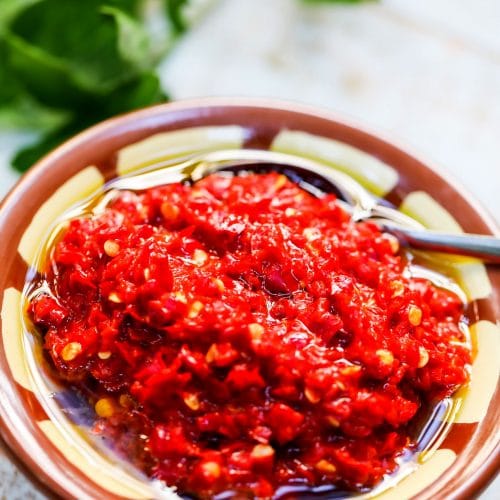
Harissa Paste Recipe
Instructions
- Spread peppers out on a tray and allow them to semi dry for 4 days.
- Remove the stems and place in a food processor.
- Add salt, and ⅓ cup of olive oil.
- Process until you reach your prefered consistency.
- Add the rest of the olive oil if mixture appears too dry.

